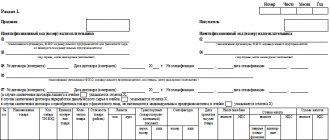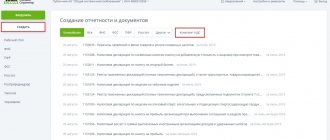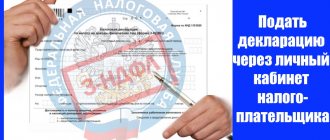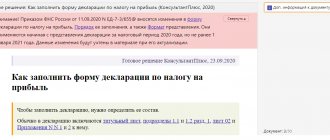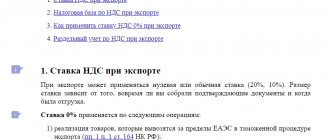HomeCustoms payments Customs VAT
Customs VAT is a payment that is regulated by the legislation of the EAEU (Article 46 of the EAEU Labor Code). It is collected by customs authorities for goods moved across the customs border. Despite the efforts made to harmonize tax legislation, VAT in each EAEU country has its own characteristics. For the state, collecting VAT is an effective way to replenish the budget; its collection provides significant and stable revenues to the budget of the Russian Federation. In addition, customs VAT protects domestic producers, providing them with competitive advantages. This tax is subject to national tax laws.
Customs payments
customs duty
Customs duty
Customs excise duty
VAT rates according to the Commodity Nomenclature of Foreign Economic Activity
The commodity nomenclature of foreign economic activity (TN FEA) is a special classifier of goods developed by the member countries of the EAEU. It is a table of code values, each of which relates to a specific type of product - a HS code. VAT rates are tied to the HS code. This code consists of 10 digits. The customs declarant, having determined the product code, understands the meaning of the VAT rate. Exact compliance of the selected code with the nomenclature is one of the most important tasks of the customs declarant.
Do you need to determine the HS code? Don't know what fees you will have to pay at customs? – We will help you!
Submission deadlines
The declaration can be provided to the inspector in person, using the services of the post office and sent with a list of the attachments, or sent:
- in electronic format, if the average number of employees per organization or individual entrepreneur is more than 100 people for the previous year;
- if the number is no more than 100 people, then it is allowed to report on paper.
The declaration must be submitted to the regulatory authority no later than the 20th day of the month following the month of the import date and the date of registration.
Customs VAT rates
Customs duty and VAT rates differ. Customs VAT rates apply to broader product categories and are regulated by the tax legislation of the Russian Federation (Article 164 of the Tax Code of the Russian Federation). Customs VAT rates from 2021 can take three values: 0%
— tax exemption,
10%
— preferential taxation,
20%
— full taxation.
| VAT rate | Application |
| There are goods the import of which into Russia is exempt from tax, for which VAT will be 0 percent. Before calculating VAT, you need to find out whether this product is eligible for tax exemption and clarify under which customs procedure the product is placed (Article 150, 164 of the Tax Code of the Russian Federation, Government Decree No. 1042 (as amended on March 20, 2018) On approval of the list of medical goods )). To be exempt from this tax, you must provide documents confirming the intended purpose. | |
| 0% | consumables used for scientific research not produced in the Russian Federation;
When placing goods under customs procedures (Article 151 of the Tax Code of the Russian Federation): |
| In some cases, according to Article 164 of the Tax Code of the Russian Federation, the VAT rate will be 10% | |
| 10% | 1) Food products:
2) Products for children:
3) Periodicals, with the exception of periodicals of an advertising or erotic nature.
|
| 20% | In all other cases (clause 3 of article 164 of the Tax Code of the Russian Federation). |
Import VAT: general overview of information
Previously, the current union of states was the Customs Union. Since January 2015, a renewed union of states, the EAEU, began to operate, which currently includes:
- Russian Federation;
- Republic of Belarus;
- The Republic of Kazakhstan;
- Republic of Kyrgyzstan;
- Republic of Armenia.
Organizations and individual entrepreneurs when importing goods into these countries are required to calculate import VAT not to customs, but to their Federal Tax Service, and at the same time display the data in the corresponding declaration.
If you want to find out how to solve your particular problem in 2021, please contact us through the online consultant form or call:
In certain cases, the import of goods is not taxed. For example, if medical goods are imported into Russian territory, their sale in Russia is not subject to value added tax.
Absolutely all importers, without exception, are required to pay import tax:
- VAT payers;
- recognized as exempt from the obligation to pay VAT (in relation to tax calculation);
- organizations and individual entrepreneurs under special regimes.
Persons from the second and third paragraphs include import VAT in the cost of services or goods purchased during the reporting period.
To calculate VAT you need:
- Correctly determine the product code according to the Commodity Nomenclature of Foreign Economic Activity;
- Determine the tax rate using the code;
- Determine the import duty rate;
- Determine the excise tax rate;
- Calculate the customs value of goods and excise tax;
- Using the formula, we get VAT = (Tam St. + Tam. St. + Share) x VAT rate%.
Example of VAT calculation
Example 1: Goods are imported for an aircraft plant: Pipes and tubes made of aluminum alloys without further processing after extrusion for the production of aircraft engines. Product code 7608208902. VAT = 20%; Import duty = 0%; Excise tax = 0%; Customs value = 78,000 rubles. VAT = 78,000 x 20% = 15,600 rub.
Example 2: An individual entrepreneur imports a batch of strollers from Israel for people who are unable to move. HS code 8713100000. The stroller is a vital medical equipment (preferential product). Import duty = 0, goods are not subject to excise tax, VAT = 0%. To apply these rates, it is necessary to provide documents confirming the intended purpose of the stroller, issued by the federal executive body, and a registration certificate. If supporting documents are not provided, then VAT = 20%.
Customs duty and VAT on import
Decree of the Government of the Russian Federation dated November 27, 2006 No. 718 “Customs Tariff of the Russian Federation” introduces customs duties in the form of a percentage rate of the customs value (ad valorem rates), plus specific rates (in the form of a fixed amount in euros per unit of goods: piece, kilogram and etc.), plus combined ones (calculation is carried out both according to ad valorem and according to a specific scheme - the larger of the received amounts is accepted).
Customs duties are added to the customs value, after which a percentage (excise tax) is taken from the amount, and only after that the total tax base is determined as the sum of the customs value, customs duty and excise tax for calculating VAT.
How is VAT paid to customs?
Individuals
are not VAT payers, except in certain cases.
Legal entities
In order to pay VAT and/or other customs payments, you must register with Customs and receive a Unified Personal Account (USA). To avoid unnecessary costs and delays at customs, money must be transferred to the account in advance in the form of an advance payment. You can transfer money by submitting a Payment Order. There are instructions for filling out the Payment Order. In case of overpayment, you can submit a refund request within 30 days. VAT and other payments can be paid without advance payment at the time of filing a customs declaration using the “Round” or “Customs Card” payment system.
To pay VAT, the Budget Classification Code (BCC), consisting of 20 digits, is indicated in the payment instruction in field 104. KBK determines the address and purpose of the payment for payment of the fee and VAT, KBK takes the value: 15311009000010000180. Field 107 code of the customs authority administering the payment, consisting of 8 digits without spaces, dots and letters, the code does not have a date format. For ELS, in field 107 the code value is indicated: 10000010.
Documents and information for payment and VAT refund at customs
- List of documents for registration of a Legal entity at customs (View)
- List of documents for registration of an individual entrepreneur at customs (View)
- List of correspondence codes for types of payments paid at customs, KBK (View)
- Payment order for payment of VAT to customs (View)
- Instructions for paying customs duties (Watch)
- Application for refund of advance payments, including VAT (View)
- Application for refund (offset) of overpaid (collected) payments (See)
- Application for return (offset) of cash deposit (See)
How to fill out a declaration
The indirect tax return includes a standard cover page and three sections.
The first section collects information about VAT on imported goods. Sections 2 and 3 contain information about excise taxes and are completed only if necessary. That is, if the company does not pay excise taxes, only the title page and section 1 need to be submitted.
Section 1 contains the amounts of VAT payable. In this case, the entire VAT is divided depending on the type of goods. Line 030 is intended to reflect the total amount of tax. Lines 031–035 are the decoding of line 030. Thus, line 032 reflects the tax on products of processing of customer-supplied raw materials, and line 035 is the tax on goods imported into the Russian Federation under a leasing agreement.
There are also imported goods that are not subject to VAT (Chapter 21 of the Tax Code of the Russian Federation) - they should be reflected in line 040 of Section 1.
Section 2 records information about all excisable goods, except for ethyl alcohol of various origins. Excise taxes, like VAT, are reflected by type of excisable goods. Also in this section, for each type of product, the country from which the product was delivered is indicated.
When filling out the second section, you will need to take into account a number of nuances. All features are described in detail in the Procedure for filling out the declaration.
Section 3 provides information about alcohol.
Codes of types of excisable goods are contained in the appendices to the procedure for filling out the declaration.
The VAT declaration for the import of goods is filled out only when importing goods from countries that are members of the EAEU (for example, from Italy, China, Germany, etc. it is not filled out and is not submitted). In the case of importing goods from countries outside the EAEU, the issue of VAT payment is resolved through customs and the tax authority simultaneously, and confirmation of the value of the imported consignment is a customs declaration (declaration of goods, DT) and customs value.
The VAT declaration for the import of goods is submitted electronically via telecommunication channels through an electronic document management operator before the 20th day of the month following the expiring tax period (according to paragraph 5 of Article 174 of the Tax Code of the Russian Federation).
Filling out and submitting a VAT declaration to the tax (fiscal) authority when importing goods is the responsibility of the importer. At the same time, the procedure for submitting and filling out a VAT declaration when importing products differs from regular reporting and is regulated by the provisions of Order of the Ministry of Finance of the Russian Federation No. 69n dated July 7, 2010. The declaration is provided along with a package of documents at the place of tax registration of the importer. List of required documents:
- application for the import of goods and payment of value added taxes in 4 copies (all 4 are signed by the tax service, 3 are returned to the applicant, 2 of which he must transfer to his supplier in order to be able to receive a tax deduction);
- bank statements or payment orders with bank marks;
- a set of transport and shipping documents (to determine by the tax authority the points of departure and destination of the cargo, as well as its route);
- invoices and other payment documents;
- original or copy of a foreign trade supply contract (agreement).
VAT on export of goods
A zero VAT rate has been established for the export of goods from Russia; in addition, the exporter can compensate for the VAT paid when purchasing goods. This is done to avoid double taxation and develop foreign trade activities.
For example,
The exporter purchased goods in Russia in the amount of 5,000,000 rubles and paid VAT at the VAT rate of 20%, the VAT amount was 1,000,000 rubles. He sold the goods he exported for 5,500,000 rubles, with a VAT rate of 0% (Article 164 of the Tax Code of the Russian Federation). Since the exporter works under OSNO and is a VAT payer, he has the right to a refund of the VAT paid. To do this, he must provide documents (Article 165 of the Tax Code of the Russian Federation) confirming the fact of export of goods and payment of VAT. After a desk audit, a VAT refund will be issued.
Frequency and deadlines for delivery
A special declaration on indirect taxes must be drawn up and submitted monthly:
- for the month in which the organization accepted imported goods for registration;
- for the month in which the lease payment term stipulated by the leasing agreement occurs (if goods are imported under a leasing agreement, which provides for the transfer of ownership of the goods to the lessee).
This is stated in paragraph 20 of Appendix 18 to the Treaty on the Eurasian Economic Union and paragraph 1 of the Procedure approved by Order of the Ministry of Finance of Russia dated July 7, 2010 No. 69n.
The provisions of Article 163 of the Tax Code of the Russian Federation, which states that the tax period for VAT is a quarter, do not apply in this case. This is explained by the fact that international treaties on taxation issues take precedence over Russian tax legislation (Article 7 of the Tax Code of the Russian Federation). The Treaty on the Eurasian Economic Union refers to such agreements. The requirements stipulated by this agreement are mandatory for all Russian organizations.
The declaration must be submitted no later than the 20th day of the month following the one in which the organization accepted for accounting goods imported from countries participating in the Customs Union. By the same deadline, the amount of VAT on imported goods must be transferred to the budget. If an organization imports leased items into Russia (under an agreement that provides for the transfer of ownership of them to the lessee), the declaration must be submitted no later than the 20th day of the month following the month in which the payment due date stipulated by the leasing agreement occurs.
This procedure is provided for in paragraph 20 of Appendix 18 to the Treaty on the Eurasian Economic Union and paragraph 1 of the Procedure approved by Order of the Ministry of Finance of Russia dated July 7, 2010 No. 69n.
Simultaneously with the declaration, a package of documents must be submitted to the inspectorate, which is provided for in paragraph 20 of Appendix 18 to the Treaty on the Eurasian Economic Union.
The deadline for submitting a declaration and package of documents may fall on a non-working day. In this case, submit them on the first following working day (clause 5 of the Procedure approved by order of the Ministry of Finance of Russia dated July 7, 2010 No. 69n).
Refund of customs VAT when exporting goods
Participants in foreign trade activities have the right to deduct VAT paid by them when importing goods into the Russian Federation only if the exporter is a VAT payer. If the goods are intended for transactions that are subject to VAT, and they are accepted for accounting. A deduction can be made if the goods are intended for operations that are subject to VAT. To confirm your right to a tax deduction, the following documents may be required:
- foreign trade contract with a foreign supplier;
- invoice for payment from the supplier (invoice) invoice;
- customs declaration (copy);
- payment order, bank statements, certified duplicates of payment orders.
The listed documents must be stored for four years.
If an organization is not a VAT payer, then, according to the law, it will not be able to receive a deduction. These are organizations that have chosen tax regimes: simplified taxation system (USNO), unified tax on imputed income (UTI), unified agricultural tax (UST).
Import VAT
VAT - known as value added tax, when importing goods, will be another customs payment that will have to be paid to “clear” the goods through customs. If you apply a special regime and have not previously encountered VAT in your activities, then this privilege does not apply when importing foreign goods.
In order to calculate VAT payable, you need to determine the tax base and tax rate. The tax base for paying VAT consists of the customs value of the imported goods (we wrote about it in the first part of our article), the amount of import customs duty, and the amount of excise tax. Then all this is multiplied by the rate (0, 10 or 20%)
Submit reports in three clicks
Elba will calculate taxes and prepare business reports based on the simplified tax system, UTII and patent. It will also help you create invoices, acts and invoices.
Try 30 days free Gift for new entrepreneurs A year on “Premium” for individual entrepreneurs under 3 months
How to determine the rate for calculating VAT
Check the Tax Code to see if the goods you import are exempt from VAT (Article 150 of the Tax Code of the Russian Federation). If not released:
Find the code of the imported product in the Unified Customs Tariff of the Customs Union.
Compare this code with the lists of the Government of the Russian Federation, in which the listed goods are taxed at a rate of 10%. There are 4 lists in total, which include food products, products for children, medical products and books on education, science, and culture.
If you find a product on the list, it is taxed at a rate of 10%; if it is not on the list, then at a rate of 20%.
You need to pay VAT before the goods are released from customs. The tax is paid directly to the customs authority. The exception is goods imported from Belarus and Kazakhstan. In this case, you pay VAT not at customs, but at your tax office within the standard VAT deadlines. But more about this at the end of the article.
If you are on the general taxation system, you can deduct the VAT you paid. If you use the simplified tax system, then the tax paid is your expense.
Services for calculating VAT and customs clearance of goods
Our company “Universal Cargo Solutions” provides services for clearance of goods at any customs office of the Russian Federation, selection of HS codes, determination of the customs value of goods, calculation of customs duties required for payment, including VAT. If necessary, we have the ability to promptly pay customs duties for the client and carry out prompt customs clearance or customs clearance of goods at customs, which significantly reduces time and costs.
We are confident that we will become your reliable partner at customs!
Find out customs VAT or order a service
Completion Guide
When filling out a VAT return, all reporting entities are in any case required to fill out the title page and section one of the declaration, namely the following organizations:
- who, during the monthly reporting period, had the fact of registering goods imported into the territory of the federation from the EAEU countries (regardless of whether such goods are subject to VAT or not);
- for whom, during the monthly reporting period, the leasing payment term stipulated by the leasing agreement has come.
Display data for the enterprise. Enter the checkpoint code and tax identification number, indicate the adjustment number and display the tax period code. Fill in the code line of the tax authority to which you are reporting, and the accounting code - 400 if you are reporting at the place where the taxpayer is registered. Next, you should enter information about the representative: company name, legal and actual address, KVED code, current phone number.
The first section displays the amount of tax that is calculated to be paid to the state on goods that were imported into Russia from the EAEU countries.
The second section displays the amount of excise tax calculated to be paid to the state on excisable goods that were imported into Russia from the EAEU countries.
- The tax base is calculated for the type of each excisable product.
How to correct a mistake in a boundary plan without resorting to court? Find out about it here.
Where to start privatizing a land plot? Our article is devoted to this issue.
